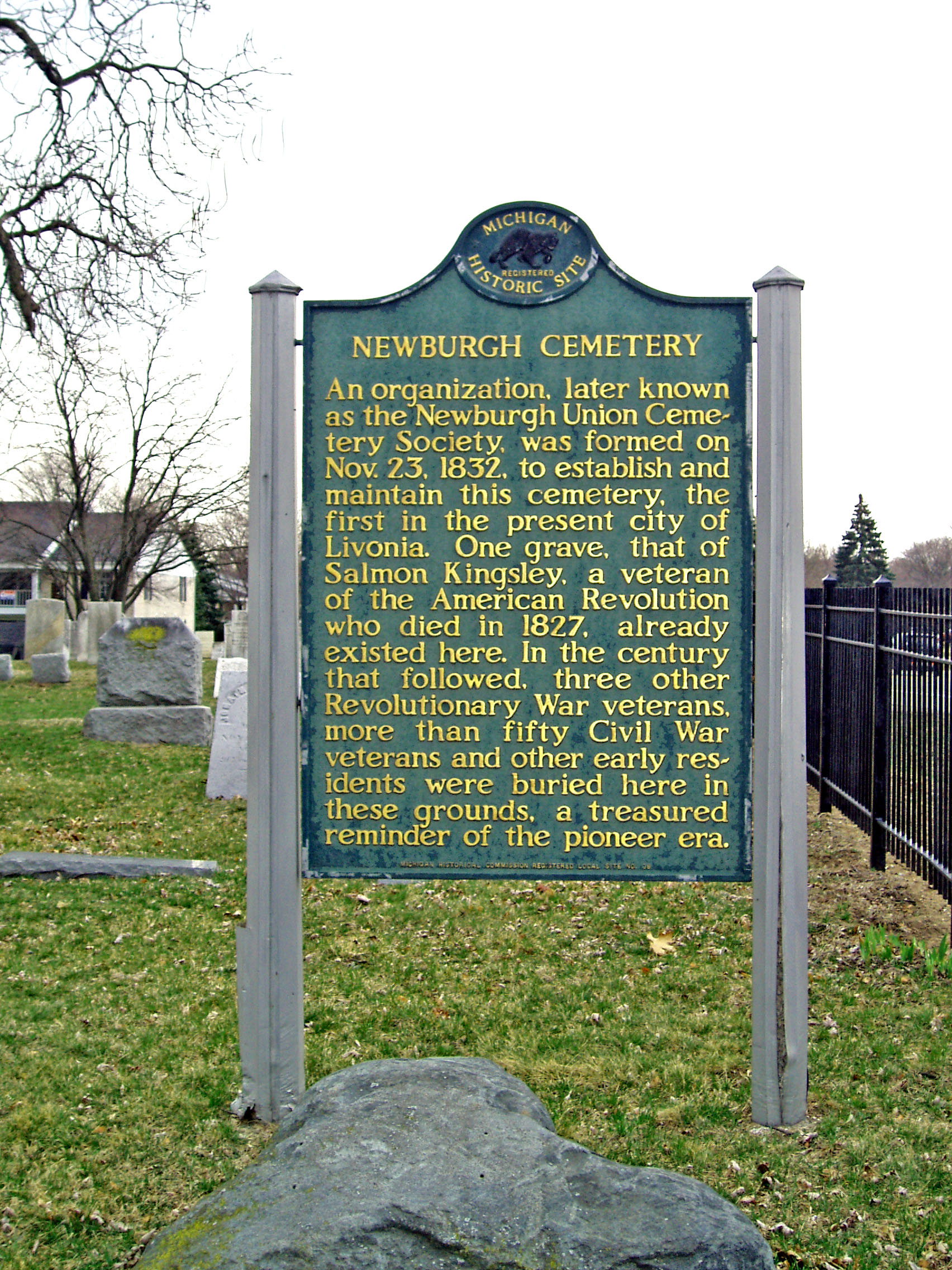Newburgh Cemetery
36000 Ann Arbor Trail, Livonia
Immediately after the Revolutionary War, leaders in the eastern states assumed that their state’s western boundary was the western limit of the United States, wherever that might be. Most of the highly productive and accessible farmland in the original states was already cultivated so Revolutionary War veterans frequently moved west to find arable land at low cost or no cost. A section of northeastern Ohio was known then as Connecticut’s Western Reserve. Indeed, a major university in Cleveland continues to use that name. Gradually, the federal government pressured the eastern states to surrender their claims for lands west of the Alleghenies. By the time Congress adopted the Northwest Territories Act in 1787, the eastern states had given up their claims and, eventually, Ohio, Indiana, Illinois, Michigan and Wisconsin were established as states in that area. Moving to the west was common as the United States developed in the early years of the Nineteenth Century. Very few, however, migrated to Michigan until the Erie Canal was completed across New York state in 1825. The first settlers in what became known as the Newburgh area of western Wayne County arrived about 1825. One of these settlers was Salmon Kingsley, a Revolutionary War veteran who died about two years later. He was buried in Newburgh Cemetery and was the first internment recorded in what is now Livonia. In 1832 a burial society was organized and Joseph Kinsgley, the son of Salmon Kingsley, gave some land for the cemetery that is now commemorated in this State of Michigan Historical Marker. Those who established the burial society purchased additional land such that Newburgh Cemetery now encompasses 2.35 acres. The records of this burial society with a list of decedents buried here is available at the Livonia Historical Society. I do not know why the early residents of this area named their village Newburgh, a name that persists and is still in use with the nearby United Methodist Church and the Newburgh Mill that Henry Ford built along the Middle Rouge River in 1934. Livonia was chartered by the territorial legislature as a township in 1835. Presumably, there were settlers from either or both Livonia, Pennsylvania and Livonia, New York who suggested this name. I assume that Livonia is not named for that area between Latvia and Estonia—actually between the Baltic Sea and the Golf of Riga that is now known at Livonia.
State of Michigan Registry of Historic Sites: P4626, Listed January 24, 1964
State of Michigan Historic Marker: Placed April 17, 1964
Use in 2009: Cemetery
Website providing information about Newburgh Cemetery: http://www.geocities.com/histmich/newburgh.html
National Register of Historic Places: Not listed
Picture: March 27, 2009
